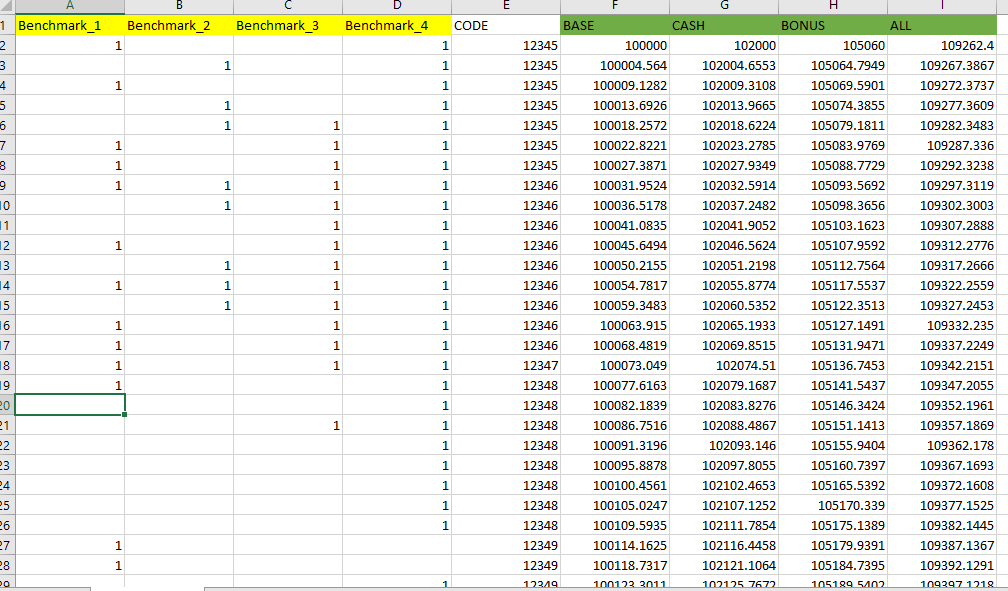

“from how many places did we get here”?) Then, to improve the clarity of programs, all modern programming languages were equipped with special constructs that allowed the repetition of instructions or blocks of instructions. Specifically, one risked of loosing control of all the gotos that transferred control to a specific label (e.g. Yet, the control of the sequence of operations (the program flow control) would soon become cumbersome with the increase of goto and corresponding labels within a program. The beloved and nowadays deprecated goto found in Assembler, Basic, Fortran and similar programming languages of that generation, was a mean to tell the computer to jump to a specified instruction label: so, by placing that label before the location of the goto instruction, one obtained a repetition of the desired instruction a loop. In modern – and not so modern – programming languages, where a program is a sequence of instructions, labeled or not, the loop is an evolution of the ‘jump’ instruction which asks the machine to jump to a predefined label along a sequence of instructions. Even for ‘calculating machines’, as computers were called in the pre-electronics era, pioneers like Ada Lovelace, Charles Babbage and others, devised methods to implement such iterations.

It is nothing more than automating a certain multi step process by organizing sequences of actions (‘batch’ processes) and grouping the parts in need of repetition. ‘Looping’, ‘cycling’, ‘iterating’ or just replicating instructions is quite an old practice that originated well before the invention of computers. Want to learn even more on loops? Start the DataCamp interactive R programming tutorial for free. And then try to get rid of those whenever the effort of learning about vectorized alternatives pays in terms of efficiency. In general, the advice of this R tutorial on loops would be: learn about loops, because they offer a detailed view of what it is supposed to happen (what you are trying to do) at the elementary level as well as an understanding of the data you are manipulating. We will present a few looping examples then criticize and deprecate these in favor of the most popular vectorized alternatives (amongst the very many) available in the rich set of libraries that R offers.
For loop in r studio how to#
If you're planning any kind of parametric analysis, for instance, removing outliers is often a best practice, because they can skew your mean and standard deviation.In this easy-to-follow R tutorial on loops we will examine the constructs available in R for looping, and how to make use of R’s vectorization feature to perform your looping tasks more efficiently. The decision to remove outliers really depends on your study parameters and, most important, your planned methodology for analyzing data. To avoid the infinite loop, then, if your outlier definition uses a statistic drawn from your data, then you should only remove outliers once if your criteria are absolute, then you won't observe this kind of recursive behavior, as you'll have removed all cases meeting the criteria in your first pass. Length(remove_outliers_3) / length(remove_outliers_1) Remove_outliers_1 < (mean(remove_outliers_1) + 3*sd(remove_outliers_1))]

Remove_outliers_1 (mean(remove_outliers_1) - 3*sd(remove_outliers_1)) &
For loop in r studio code#
The code below illustrates this with random data drawn from a normal distribution, and using 3 standard deviations from mean as criteria to define outliers: # make toy data We can't know the specific cause of the infinite loop you're observing without specific information about how your function identify_outliers() is labeling cases as outliers, but common approaches like removing cases above or below 3 standard deviations from the mean, or outside of 1.5 * IQR, could give you the same behavior you're observing if you're recalculating the criteria for labeling an outlier on each successive iteration. When I remove these outliers, both of my within subjects variables become significant, rather than only one prior to removal (two-way repeated measures ANOVA).Īdditionally, when I check for outliers after I remove the outliers above, it gives me this output: Condition Distancetotarget Proportionofcorrecttrials ID is.outlier is.extremeĪnd thus it seems like a never-ending loop? Or do I only remove the datapoints for EXTREME=TRUE? 0.4 P_200220145557 TRUE FALSEĪm I right in removing all the datapoints above which correspond to OUTLIER = TRUE as a next step, in order to make the analysis as accurate/truthful as possible? Identify_outliers(Proportionofcorrecttrials) Condition Distancetotarget Proportionofcorrecttrials ID is.outlier is.extremeĨ. I am trying to remove outliers from my dataset:


 0 kommentar(er)
0 kommentar(er)
